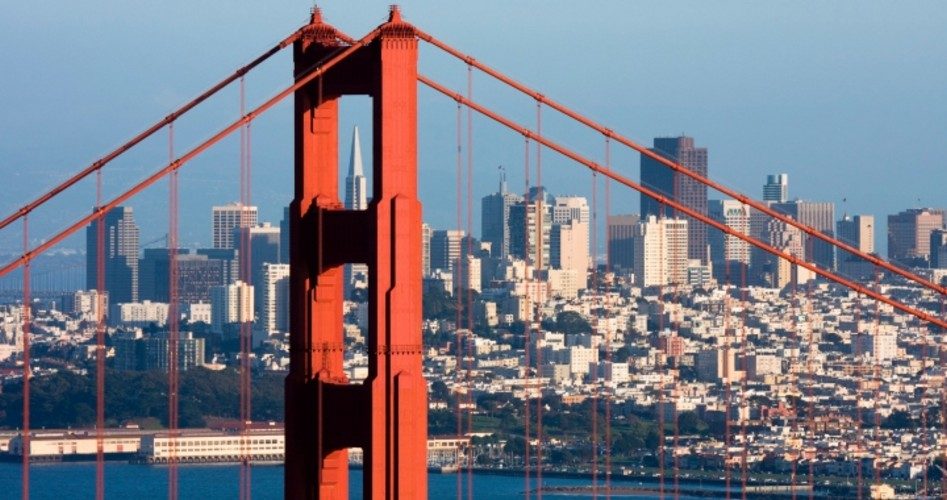
Podcast: Play in new window | Download ()
Subscribe: Android | RSS | More
If ever there were a perfect example of the income inequality that Senator Bernie Sanders (I-Vt.) and Representative Alexandria Ocasio-Cortez (D-N.Y.) are always blathering about, it would be the city of San Francisco, California. San Francisco is a tremendously wealthy city that boasts more billionaires per capita than any other city in the world. It is also home to one of the most depressing and disgusting homeless problems that anyone could ever imagine.
Residents and tech companies blame the city for the situation, and the city blames the rise of big tech conglomerates for an unreasonable surge in real-estate pricing that makes housing unaffordable for the average San Franciscan.
But there’s more than enough blame for everyone.
While government and big tech bicker over who is responsible, the problem of homelessness just continues to grow and get more disgusting. Open the Books, a public spending transparency group, has even begun to map where piles of human feces are reported on the streets.
In January, the city conducted its biennial physical count of the homeless. The count showed that the amount of homeless in the city had risen to just over 8,000, a 17-percent increase since the last count was taken in 2017. And that increase would have been greater had San Francisco not made the decision to count using federal guidelines, instead of their own, which had been used until this year. The federal guidelines don’t include people without a permanent address who are in prison, rehab, or hospitalized. Had the city used its former definition of homeless, the rise would have been over 30 percent.
Like any good leftist-run city, San Francisco has thrown tons of money at the problem. Unfortunately, despite spending $280 million dollars — approximately $37,000 per homeless person — on the crisis in 2018, the homeless crisis in San Francisco continues to worsen.
Much of that money is wasted on a growing homelessness industry, which ostensibly exists to assist the homeless but, in reality, exists only to keep itself going. In other words, the businesses and organizations meant to assist the homeless need the homeless in order to justify their own existence.
The city is building what it calls navigation centers, which are billed as an upgrade over old-style shelters. People with pets and belongings are welcome in navigation centers, but the more laid-back attitude of the new centers comes with other dangers.
“[Navigation centers] are not sober facilities, and people steal and break into cars to feed their habits,” said Susan Dyer Reynolds, editor-in-chief of the Marina Times.
Increasingly, the homeless are becoming violent as their desperation, drug addiction, and mental illnesses grow. Last week, 25-year-old Austin Vincent, a homeless man, was caught on video attacking a woman who was attempting to enter her condominium building. Vincent allegedly told the victim that he was attempting to save her from robots and had offered to kill another woman in order to earn her trust.
Vincent, an obviously mentally disturbed man, was arrested and then, inexplicably, released by Judge Christine Van Aken despite the DA’s objections. Vincent was subsequently re-arrested for another incident that occurred in February. The incident typifies the public’s fear and distrust of both the homeless and of a system that allows them to run free even when they are caught for committing violent crimes.
In June, the San Francisco Board of Supervisors voted overwhelmingly to back a pilot program that would allow the city to force certain homeless persons, who suffer from drug addiction or mental illness, into rehab facilities to get treatment. But such a common-sense measure was derided by leftists in the city who claimed such a program would deprive people of civil liberties.
You know, the freedom to defecate, shoot up on the street, and attack people — those civil liberties.
Meanwhile, the city has a point about the surge of tech companies in the city and the impact they have had on the cost of living. According to a 2018 report from the Department of Housing and Urban Development, a family of four earning less than $117,422 per year qualifies as low-income in the city. An income for a single person earning less than $82,000 puts them in the same desperate straits.
Because so much money exists in the area, real estate costs have skyrocketed to the point where even a condemned property can fetch over a million dollars on the open market. People are literally being priced out of the city. Recent polls have suggested that up to 53 percent of Bay Area residents are considering leaving due to the high cost of living and fear that they will be priced out of the real estate market.
San Francisco is a city of contrasts. Gorgeous vistas and beautiful views of the Golden Gate Bridge exist alongside the sight of hopeless drug addicts passed out in their own vomit on city sidewalks. With so much money there, existing in an area with some of the most liberal and, supposedly, compassionate politicians in the world, you’d think it would be the perfect place in which to establish a leftist utopia.
But it hasn’t worked out that way for San Francisco.


